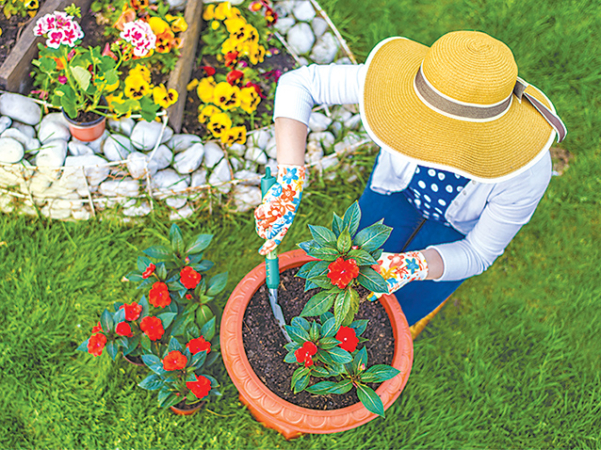For the majority of gardening enthusiasts, gardening is a warm weather activity. While some people live in climates that make it possible to enjoy gardening year-round, those who don’t often lament the end of the gardening season.
Winter might not be conducive to gardening, but the arrival of cold weather does not necessarily mean a gardener’s work is done until the following spring. Taking steps to protect plants from winter weather is an important part of maintaining a healthy garden that thrives from year to year.
Timing is of the essence when winterizing a garden. The online gardening resource Get Busy Gardening!TM advises gardeners that the best time to winterize is after the first hard freeze in the fall. A hard freeze occurs when temperatures dip below freezing overnight. When that occurs, annual plants and vegetables are killed off and perennial plants, which grow back year after year, begin going dormant.
Better Homes and Gardens notes that perennials are the easiest plants to prepare for winter, as they require just a little cutting back and mulching to be safe from cold weather. But no two perennials are alike, so homeowners should consult their local gardening center for advice on how to prepare their particular perennials for the coming months.
The steps necessary to winterize annuals depends on which type of annuals, cool- or warm-climate, you have. Cool-climate annuals should be covered with polyspun garden fabric when light frost is in the forecast. In addition, Better Homes and Gardens recommends pulling dead annuals and adding them to a compost pile after a killing frost. Any annuals that developed fungal disease should be discarded. Mulch annual beds with a three- to four-inch layer of chopped leaves or similar materials, spreading the mulch only two inches thick over self-sown seeds you want to germinate in the spring.
Warm-climate annuals also should be covered with polyspun garden fabric when light frost is expected. Seeds of cold-hardy annuals can be planted for extended winter bloom, while gardeners also can collect seeds of warm-weather plants that will breed true to type. Even though you’re winterizing, Better Homes and Gardens recommends that gardeners continue to weed and water their plant beds and plants while also keeping an eye out for pests. If organic mulch has decomposed or thinned out, replace it with a new layer.
Get Busy Gardening!TM notes that the bulbs of tender plants like dahlias and tuberous begonias can be dug up and overwintered in their dormant state. All dead foliage should be removed after the bulbs have been dug up, and the bulbs should be allowed to dry out a little before being stored. Container gardeners can overwinter their tender bulbs in their pots inside, but be sure to remove their foliage and store them in a dark, cool place that maintains temperatures above freezing.
Winterizing may mark the end of gardening season, but it’s an important task that can ensure a healthy, beautiful garden next spring, summer and fall.





Leave a Comment
Your email address will not be published. Required fields are marked with *